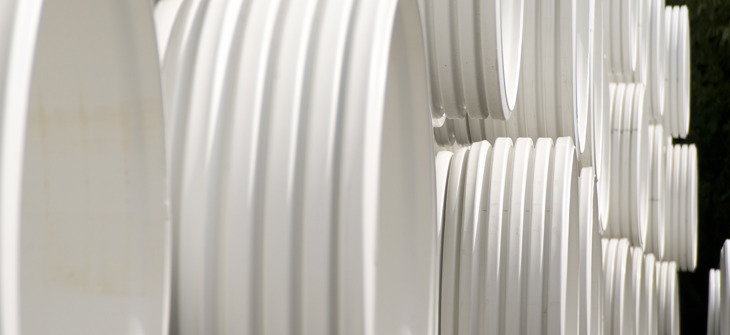
Considering A-2000™ PVC For Your Next Sanitary or Storm Sewer Project?
Here’s What You Need to Know.
Why is PVC pipe the right material for water and sanitary and storm sewer utilities? Today, I'd like to cover some key advantages for using PVC, and why it's been approved for use for decades.
PVC pipes have been used in the U.S. since the 1960s. It is made from a vinyl chloride monomer mixed with additives and modifiers to make a compound. This compound is then extruded into different sizes and shapes, including solid wall and corrugated profiles. PVC has been proven for multiple applications over the years for its unique strength, joint integrity, and corrosion resistant properties.
It is specified for its performance and economic requirements. It is used for plumbing applications and large diameter infrastructure products. PVC pipe products have done very well for many years and are a major industry in the global economy.
A- 2000™ PVC is a high performing and economical solution for sanitary and storm sewers, with a Manning's n roughness coefficient of 0.009 and a design life of 100 years. It is easy to install and has a complete line of fittings. Connections to manholes are easily done using a boot system, a gasket, or a lock ring.
Millions of feet of A-2000™ have been installed across the US, making it a popular choice for sanitary and storm sewers.
What is the Difference Between PVC and Other Thermoplastics?
A-2000™ PVC has higher long-term yield strength, modulus elasticity, and inner wall thickness than polypropylene and polyethylene. Additionally, A-2000™ PVC has a third of the thermal expansion when compared to polypropylene and polyethylene, making it ideal for sanitary and storm sewer applications.
PVC pipes have higher long-term yield strength, modulus elasticity, and inner wall thickness than polypropylene and polyethylene, and they also have a third of the thermal expansion, making them ideal for sanitary and storm sewers.
A-2000™ PVC pipe is a thermoplastic material, which is great for use in deep sewer projects, as it offers more strength and stability than other thermoplastics. It has a long-term yield strength of 3.6 times that of polypropylene and 5 times that of polyethylene, with a two times thicker inner wall. It is also designed for AASHTO LRFD structural designs and has a thermal expansion of a third that of other thermoplastics.
With this, A-2000™ PVC has a minimum cover of one foot and a maximum cover of up to 50 feet, depending on the project. Ultimately, PVC is a great choice for deep sewers as it is a material with great strength, stability, and thermal expansion properties.
Common Questions and Misconceptions about PVC Pipes PVC can ignite and self-extinguish, is not usually affected by cold weather, and can be used to create water-tight connections with concrete manholes, making it a cost-effective solution for storm sewers.
In conclusion, we know that A-2000™ PVC is a strong and durable material that can withstand temperatures of up to 140 degrees Fahrenheit. We also know that it is resistant to most chemicals and solvents, although it is not recommended for use with petroleum products.
We understand that A-2000™ PVC pipe has an initial stiffness value of around 54-55 pii, and that it can be used in a variety of applications.
